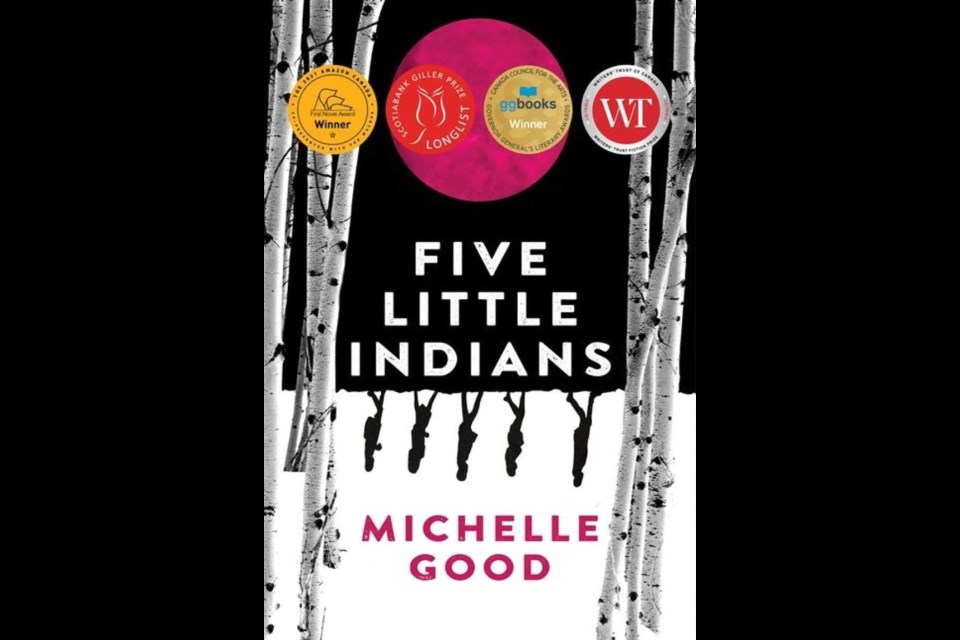The Moose Jaw Public Library’s Book Club met to discuss “Five Little Indians” by Michelle Good, a bestseller that has won multiple awards including the 2020 Governor General’s Literary Award for Fiction and, most recently, the 2022 Canada Reads competition.
Michelle Good is the daughter and granddaughter of residential school survivors and a member of Saskatchewan’s Red Pheasant Cree Nation. She earned a law degree in her 40s, a Master of Fine Arts in Creative Writing in her 50s and published her debut novel in her 60s – after nine years of writing and editing.
The question she set out to answer was, ‘Why can’t they just get over it?’
Book club members unanimously agreed that the novel has a deep emotional impact and that it permanently changed their perspective on residential schools and those who were “educated” in them.
Note: The novel deals with sensitive topics such as racism. Please read this article with understanding, discernment, and comprehension of the conversation during the book club meeting around the situations depicted in the novel.
“Five Little Indians” is not a retelling of trauma experienced in the Vancouver Island residential school its protagonists attended. Rather, it deals with the aftermath – and what it’s like just to try and live after that kind of childhood.
One book club participant said the novel evoked memories of growing up in Vancouver. Everyone knew that the downtown eastside was full of alcohol abuse, they said, and it wasn’t uncommon to see (racially profiled people) under the influence.
“The book really made me think about how none of us ever thought to ask why (residential school survivors) were drinking,” they said, “and how they ended up that way. And after reading this, (my thought was), ‘that’s probably what I would be doing too.’”
Another participant talked about a part of the book where residential school graduates were dropped off at a bus stop with no money, no connections, no guidance at all – at 16 years old.
“Even if the residential school had been a good experience, you know, without trauma, and with a real education,” the participant said, “even then, how could they be expected to do well? They weren’t prepared, they had no one to call. They were just a bunch of teenagers dropped off on the streets of downtown Vancouver.”
Yet another emotional impact came from the story of Kenny, taken from home at six years of age to attend residential school. He escapes from school and returns home after seven years, at the age of 13, to find that his parents could not cope with his removal. Their marriage failed, and they were emotionally unable to respond appropriately to his homecoming.
These memories are naturally recounted as the novel tells the story of the five survivors’ trying to make careers, form relationships, and reconnect with their culture.
Good spent eight years representing residential school survivors full-time as a lawyer. The novel is fictionalized, but the stories are all real – and unexaggerated.
“What I can’t get out of my head,” a book club member said, “is the image of six-year-olds waiting for their families at Christmas, and not understanding that their parents don’t actually know where they are.”
Another participant said that the book effectively answered the question, ‘Why can’t they just get over it?’ It was expressed that a normal childhood and family support were taken away from these children. All the participants agreed that regardless of background, the novel shows that everyone who wasn’t in the residential schools struggles to understand the experience of survivors.
An example in the novel is one Indigenous survivor whose boyfriend, also Indigenous, can’t understand her. He complains about her emotional withdrawal and her difficulty with intimacy. His parents also survived residential school, but have been unable to communicate with him just how it shaped them.
At the end of the discussion, the book club went downstairs to the Moose Jaw Museum & Art Gallery’s permanent collection of the shoes from the steps of St. Andrew’s United Church. Started in recognition of the 215 unmarked graves found at the Kamloops residential school, the St. Andrew’s display quickly became a larger symbol for the community of Moose Jaw of the ongoing need to be an active part of reconciliation.
“Five Little Indians” by Michelle Good can be borrowed from the Moose Jaw Public Library in multiple formats. It is available for purchase virtually everywhere books are sold.
The next MJPL Book Club meeting is Wednesday, May 4 at 2:30 to discuss “Reproduction”, a novel by Canadian author Ian Williams.




